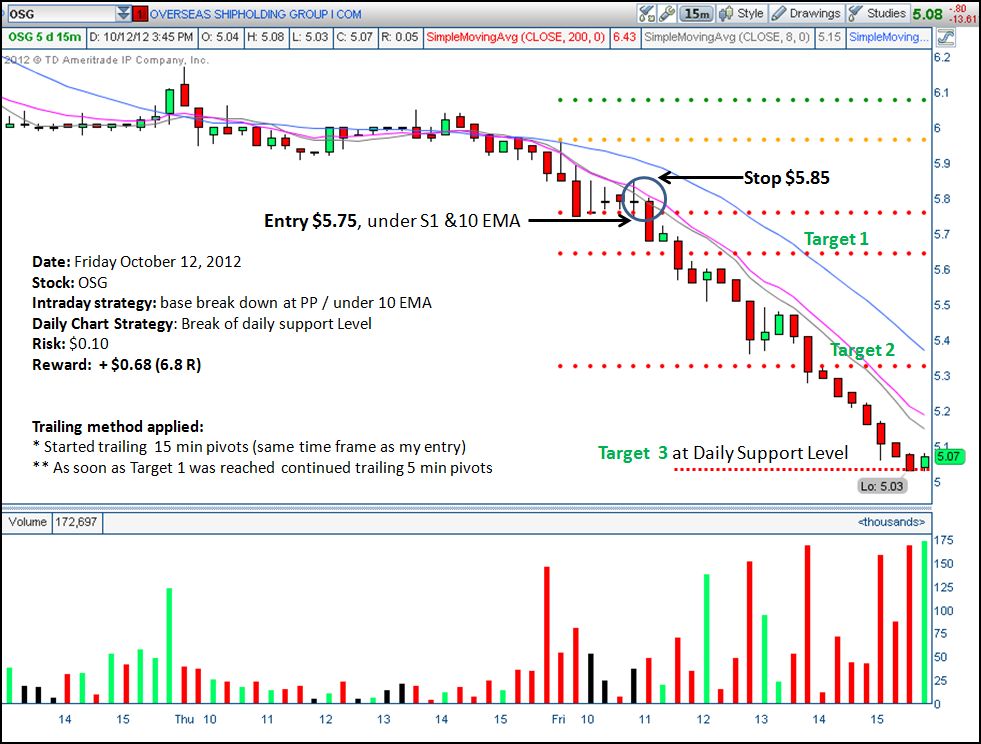Sometimes aggressiveness in trading is a sign of weakness and lack of discipline.
The desire to jump into the action without having a thorough game plan is one of the biggest mistakes a beginning trader can make.
NOVICE MISTAKES
Often, novice traders are drawn towards scalping and shorter timeframe charts, such as the 1-minute and/or the 2-minute. Beginning traders often skip over proper due diligence on a lot of contributing factors that can highly influence the performance of the set-up they take.
They never have a written plan, they think they know it all, never respect a risk to reward ratio, try to find bottoms and tops, and add to losing trades. They find themselves on a losing steak or best case scenario at breakeven, but never progressing, never growing their account.
FOLLOW THIS PLAN
Here is a game plan for traders that are not yet consistently profitable or are trying to hold stocks to higher targets. This plan is meant to keep day traders out of trouble in the first 30 to 45 minutes from market open.
GETTING STARTED
Before even considering taking a play a trader needs to review his or her pre-trade checklist and own set of rules.
MAKE A LIST
The list should include: stock parameters (spread, price range, volume, trend, earnings report, news, etc), pattern, location, timing of the set-up corroborated with timing of the market, risk level , risk to reward ratio, trail strategy and target projections.
After taking note of the daily premarket homework (checking news, earnings reports, upgrades, downgrades, market indexes technical analysis and bias, etc) a trader can start scanning to compile the daily focus List.
Next traders need to wait for the proper set-up that meets these requirements:
o When to select a trade: Only after the trend has established (after 10:00 AM)
o Major triggering time: around 10:30 AM, 11:45 AM, 1:15 PM and 2:45 PM
o What to look for: 5 or 15 minute buy/sell only with 60 minute confirmation, 3 to 5 bar pullback into 20 moving average (MA) or 10 exponential moving average (EMA) , 25%, 50% retracement into a support / resistance area, sometimes 75% , at our around Median Pivot (PP) or R1 for long trades and at PP or S1 for short trades.
Pay close attention to natural support and resistance levels.

ENTER THE TRADE
How to enter: $0.01 to $0.03 cents above /below the set-up and place the stop $0.02-$0.04 cents above or below the natural support / resistance area or any level of pivot point in case of a consolidation.
Position size: according to your chosen risk level. Always allow yourself at least five or six trades per day from your daily stop loss limit.
Trailing method: Chose one of the three methods: moving averages, bar by bar or pivot trails. Always trail on the same time frame you initiate the trade on. As you are approaching higher target levels you may tighten your trailing by moving gradually to a lower time frame.
Never take yourself out of a good trade just because you have reached your target, always let the market take you out. This way you can stay in the trade longer with higher profits in the long run.
BE CAREFUL
Do not trade this style in a sideways market and remember to always trend with the trend for higher odds of follow through to your projected target levels.
= = =
Read specific trading ideas here in our Daily Markets section.




